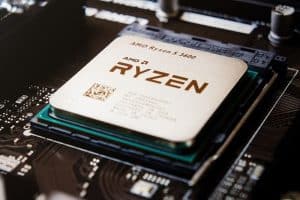In a bold move, Nvidia has announced that it will be stopping production on its popular RTX 40 Series graphics cards. Calm down gamers! Take a breath. The news has sent waves through the tech community, with gamers, digital creators, and hardware enthusiasts speculating on Nvidia’s plans and the future of high-performance GPUs. Known for its groundbreaking performance and AI-based enhancements, the RTX 40 Series set a high standard in the GPU world, so the decision to discontinue production suggests that the company may be gearing up for new innovations. This article explores the potential reasons for the production halt, what it means for various industries, the impacts on the gaming community, and what to expect from competitors like AMD and Intel.
Why Nvidia is Stopping Production of RTX 40 GPUs
Nvidia’s decision to cease production of the RTX 40 Series, while surprising to some, could be driven by a range of strategic considerations:
Preparation for the RTX 50 Series
The company has consistently been a trailblazer in graphics technology, regularly releasing new models that push the performance boundaries. Halting RTX 40 production could mean Nvidia is in the final stages of developing its next generation, likely the RTX 50 Series, rumored to offer better power efficiency, faster AI processing, and advanced ray-tracing capabilities. With production halted, they can allocate resources to prepare for the mass production and launch of its latest series.
Shifting Market Demand and Consumer Behavior
Demand for high-end GPUs, which spiked during the pandemic and a period of cryptocurrency mining, has shifted recently. As supply chains stabilize and the demand for mining GPUs wanes, Nvidia may be adjusting to changes in consumer behavior. This decision could reflect the need to realign with current market needs, potentially with a focus on AI and data center technologies.
Supply Chain and Inventory Management
With production halting, Nvidia can rebalance inventory and manage any excess stock before a new launch. Historically, high GPU inventory levels have sometimes led to price drops, particularly when a new series arrives. By stopping production, the company might be controlling inventory to stabilize RTX 40 prices and avoid an excess supply when its next-gen products enter the market.
Intensifying Competition from AMD and Intel
Both AMD and Intel have made advancements in the GPU space, providing real competition. Nvidia may be halting production not only to prepare for a next-gen release but also to assess market competition and strategize accordingly. A production halt allows them to refine its technology to ensure it maintains a competitive edge over AMD’s Radeon and Intel’s Arc GPUs.
Focus on AI-Centric Technology and Data Center Products
Nvidia’s dominance in AI and data center markets is growing, and the company may be scaling down its consumer products to prioritize high-performance GPUs tailored for machine learning and data centers. This pivot could position it as a leader in the AI revolution, expanding the scope of its product line in ways that go beyond gaming.
Impact on Gamers: What to Expect with RTX 40 Production Halt
For gaming enthusiasts, Nvidia’s halt on RTX 40 Series production has implications worth considering:
Availability and Pricing Trends
As production ceases, existing RTX 40 Series inventory may become harder to find, potentially pushing prices up for high-demand models like the RTX 4070 and RTX 4090. However, gamers and professionals, some retailers may also offer discounts to clear out remaining stock, creating a window for budget-conscious gamers to score deals on advanced GPUs.
Resale Market Dynamics
With production coming to a stop, certain models may become coveted items on the resale market, particularly the high-performance 4080 and 4090 versions. The resulting scarcity could lead to elevated resale values for owners who wish to upgrade or simply cash in on limited supply. We all know how gamers love their upgrade options! Am I right?
A Look Toward Next-Gen Upgrades
Gamers waiting to upgrade might be rewarded with Nvidia’s anticipated RTX 50 Series. The next-gen series is expected to bring remarkable improvements, particularly in energy efficiency and enhanced AI functionality. Although waiting for new GPUs requires patience, the anticipated advancements could be well worth it.
Game Optimization with RTX 40 GPUs
Current RTX 40 owners can likely expect strong support in upcoming game titles, as game developers continue to optimize for Nvidia’s high-end models. Well, expect may be wrong. We, in the gaming community, will be hoping for sure! These optimizations could extend the lifespan and relevance of the RTX 40 Series, as many games release patches and updates to improve compatibility and leverage GPU strengths.
Effects on Digital Creators and Professionals
The RTX 40 Series GPUs aren’t just for gamers! They’re heavily used by content creators, designers, and AI researchers. Nvidia’s production halt could affect these groups in several ways:
Demand for Workstation-Grade GPUs
With RTX 40 Series production halted, digital creators may look toward Nvidia’s workstation GPUs like the Quadro series. These GPUs offer specialized features for high-end rendering and data processing but often come at a premium. For professionals, securing an RTX 40 now might be a wise investment before supply dwindles.
Future-Proofing with Potential Upgrades
Nvidia’s upcoming series could improve on performance capabilities critical for 3D rendering, video editing, and AI-driven applications. Creators might soon access GPUs that not only boost processing power but also incorporate advanced AI that assists with tasks like motion capture, facial recognition, and automated rendering.
How Competitors Might Respond

With Nvidia making a notable move in the GPU market, AMD and Intel could see this as a golden opportunity to expand their share by attracting former users. Here’s what we might expect:
Aggressive Pricing and Enhanced Models from AMD
AMD may look to lure Nvidia’s customers with competitive pricing on their Radeon GPUs, especially as they limit RTX 40 availability. By offering high-performance GPUs at lower price points, AMD could attract both gamers and creators in search of powerful alternatives.
Intel’s Growing Arc GPU Lineup
Intel, a relatively new entrant in the GPU space, may also seize this opportunity to refine its Arc series and market it as a fresh alternative. Intel has been aiming for entry-to-mid-level gamers, and the reduced competition from Nvidia in certain segments could enable Intel to expand its reach in the consumer GPU market.
The Future of Nvidia’s GPU Strategy
This company’s move to stop production of the RTX 40 Series reflects its commitment to ongoing innovation and market leadership. Here’s what we might expect from the company as it prepares for the future:
RTX 50 Series Rumors and Speculations
Nvidia’s next-gen series, rumored to be the RTX 50, could bring substantial upgrades, including even faster ray tracing, AI-driven performance boosts, and enhanced power efficiency. By leveraging advanced chip designs and updated AI algorithms, the RTX 50 could set a new industry standard, offering better graphics and processing capabilities than ever before.
Increased Focus on AI and Data Center Technology
Nvidia’s strategic emphasis on AI and data center technology is expected to continue, especially given the demand for AI-focused hardware in research, autonomous vehicles, and supercomputing. Nvidia may further segment its offerings to cater specifically to AI and machine learning applications, establishing its GPUs as essential tools in these industries.
Exploring Energy-Efficient and Sustainable Tech
With sustainability becoming a priority in tech, Nvidia may focus on making its next-gen GPUs more energy-efficient, potentially lowering operating costs and environmental impact. Given recent trends, the company could incorporate more eco-friendly practices in the manufacturing and performance of future GPUs, appealing to users and organizations conscious of energy consumption.
A New Era for Nvidia and GPU Users
Nvidia’s decision to halt RTX 40 Series production underscores its readiness for evolution, likely with the goal of maintaining a competitive edge and pushing boundaries in both gaming and professional GPU applications. While current RTX 40 users will continue to benefit from support and game optimizations, the upcoming series promises even greater advancements, both for gamers and creators. As Nvidia pivots its strategy, the GPU landscape is set for a shake-up, and we may be witnessing the dawn of a new era in graphics and AI technology. Stay tuned for updates, as Nvidia is likely to reveal new details soon, potentially setting a whole new benchmark for what GPUs can achieve.


